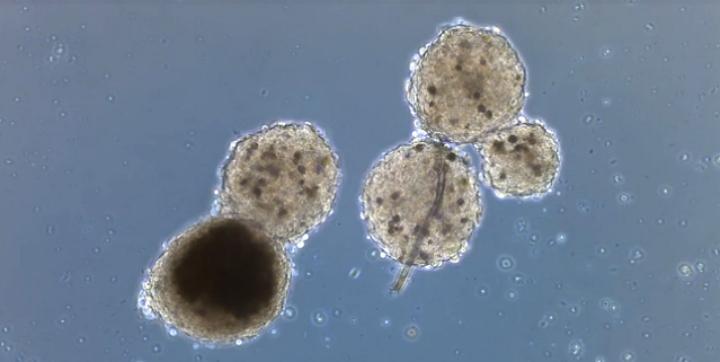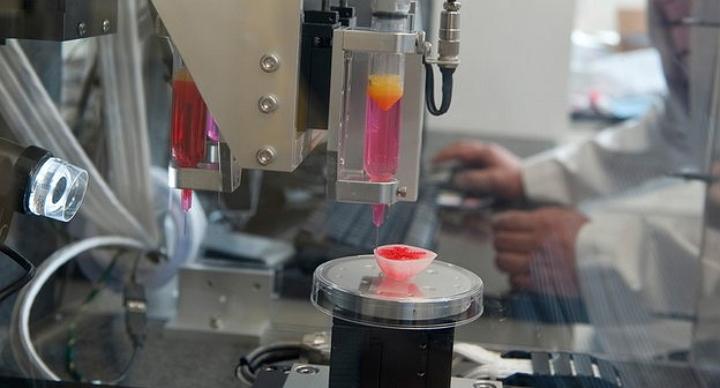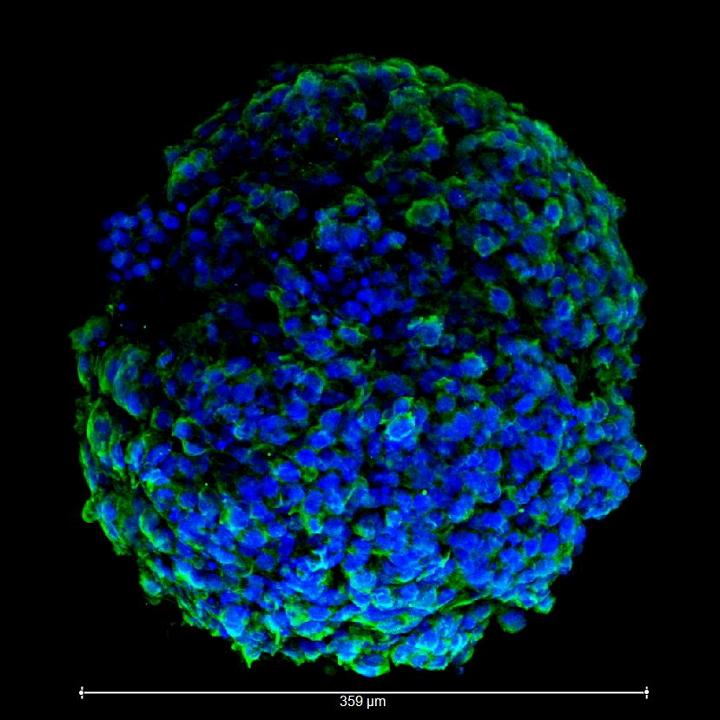They call them “organoids,” and they’re 3D printed, beating cardiac cells which are sure to inspire scientists and biologists while raising ethical concerns among critics intent on stopping the progress of the technology.
The groundbreaking research program aimed at creating human organs is the result of a project at the Wake Forest Baptist Medical Center Institute for Regenerative Medicine, and it features heart cells which are made functional and shaped using a highly-specialized 3D printer.
Popular Mechanics obtained the first images of the cells from Wake Forest.
“The heart organoid beats because it contains specialized cardiac cells and because those cells are receiving the correct environmental cues,” said Ivy Mead, a Wake Forest graduate student and member of the research team, in an interview. “We give them a special medium and keep them at the same temperature as the human body, and that makes them beat. We can also stimulate the miniature organ with electrical or chemical cues to alter the beating patterns. Also, when we grow them in three-dimensions it allows for them to interact with each other more easily, as they would in the human body.”
Current research there is using an adapted version of ink-jet printing technology to “print” skin for soldiers with life-threatening burns in which skin cells are placed directly into a cartridge along with essential support material and then directly applied to a soldier’s wound. The Wake Forest team have also developed a unique 3D printer to produce organ and tissue prototypes.
In a pair of other projects, the Wake Forest team has created functional heart cells which relied on both stem cells and “engineered artificial heart tissue.”
The project is ‘bleeding edge’ stuff which takes existing human heart cells and then “animates” them in the lab.
Anthony Atala, M.D., is the Director of the Wake Forest Institute for Regenerative Medicine. He’s also W.H. Boyce Professor and Chair of the Department of Urology there, and he’s a practicing surgeon and a researcher in regenerative medicine. While his current work focuses on growing new human cells, tissues, and organs, Dr. Atala and his team say the fact that they’ve created life-size human organs — including bladders and vaginas which have remained fully functional years after being implanted — has no plans to create a full-sized, functional human heart.
The team are also responsible for the “body-on-a-chip” program, a miniaturized human system which will ultimately be used to model the response of the human body to contagions like the Ebola virus or deadly warfare gases such as sarin and ricin. Funding for that program came from the Space and Naval Warfare Systems Center and the US Defense Threat Reduction Agency.
“Miniature lab-engineered, organ-like hearts, lungs, livers, and blood vessels — linked together with a circulating blood substitute — will be used both to predict the effects of chemical and biologic agents and to test the effectiveness of potential treatments,” Atala adds.
What do you think about his project which has created 3D printed heart “organoids” in a lab in North Carolina? Let us know in the 3D Printed Heart Organoid forum thread on 3DPB.com. Below is a video of the first lab-grown heart cells beating.
Subscribe to Our Email Newsletter
Stay up-to-date on all the latest news from the 3D printing industry and receive information and offers from third party vendors.
You May Also Like
Precision at the Microscale: UK Researchers Advance Medical Devices with BMF’s 3D Printing Tech
University of Nottingham researchers are using Boston Micro Fabrication‘s (BMF) 3D printing technology to develop medical devices that improve compatibility with human tissue. Funded by a UK grant, this project...
3D Printing Webinar and Event Roundup: April 21, 2024
It’s another busy week of webinars and events, starting with Hannover Messe in Germany and continuing with Metalcasting Congress, Chinaplas, TechBlick’s Innovation Festival, and more. Stratasys continues its advanced training...
3D Printing Webinar and Event Roundup: March 17, 2024
It’s another busy week of webinars and events, including SALMED 2024 and AM Forum in Berlin. Stratasys continues its in-person training and is offering two webinars, ASTM is holding a...
3D Printed Micro Antenna is 15% Smaller and 6X Lighter
Horizon Microtechnologies has achieved success in creating a high-frequency D-Band horn antenna through micro 3D printing. However, this achievement did not rely solely on 3D printing; it involved a combination...

































